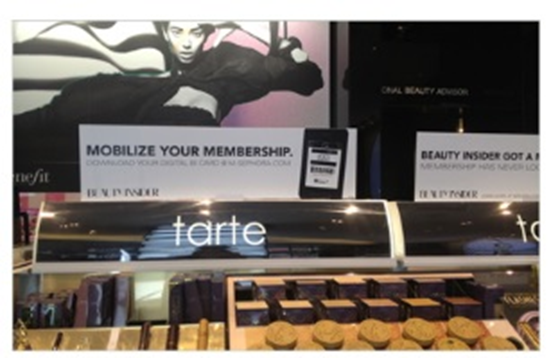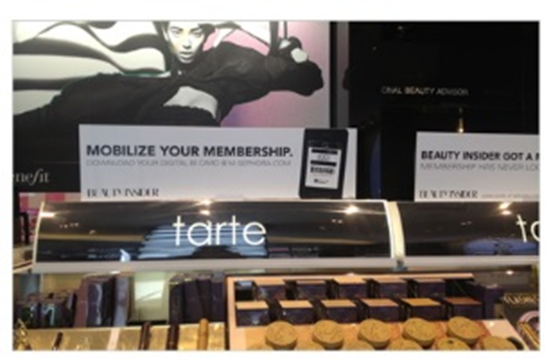
8 Ways to Optimize a Retail Location for Smartphone Use
By Lisa Mayer, Content Specialist
If you’re a brick-and-mortar merchant, you understand how omni-channel truly blurs the line between online and off. That trend will only continue. Deloitte Consulting estimates digital will influence 64% of in-store sales in 2015. With the impact of digital channels and mobile almost universal, the consulting firm states that “when everyone is online all the time…There is no offline”.
As you might expect, the driving force behind this trend is smartphones. They’re part of who we are – they almost seem like a 5th appendage. comScore estimates that as of the first half of 2015, 188.6 million people in the U.S. owned smartphones. Put another way, almost 80% of the population owns a mobile phone.
Merchants have come to understand the important role mobile devices play in omni-channel eCommerce. What owners of brick-and-mortar stores may not fully grasp is the impact of the in-store invasion of smartphones.
- A study by DigitasLBi of smartphone owners worldwide showed 85% have used them while shopping in a brick-and-mortar. That figure is up from 72% in 2014.
- The majority (55%) of smartphone users say the Internet and smartphones have changed the way they shop in a store.
- While merchants used to fear the effect of showrooming on sales, a Deloitte study shows shoppers who use their smartphones in-store convert at a rate 20% higher than those who don’t.
- Smartphone use in stores can increase the length of a visit. One-third of shopper said they spent more time in-store than usual when they shopped with their smartphones.
- Figures may show store traffic is down. However, more shoppers who visit a store are making purchases. The decline in traffic may just be the result of more focused shopping.
- Smartphones have a huge impact on holiday shopping. A Google survey indicates 82% of holiday shoppers will consult their smartphone while in a store. Equally as thought-provoking, another Google survey found that 40% of consumers said they’d use smartphones to pay in store.
Optimizing Retail Locations for Smartphone Use
No longer is it just enough to optimize digital channels for mobile use. Merchants need to optimize their stores for smartphones. To introduce some of the ways smartphones can affect in-store marketing and customer experience, we’ve pulled together some thoughts for your consideration.
Shopping Assistance: Smartphones offer a better way to deliver customer service, which is a great way to differentiate a brand. Many shoppers prefer not to interact with store personnel until they’re ready to – if at all. Almost 50% of shoppers who got assistance from a sales associate indicated they’d rather “do it themselves.” Shoppers prefer to use information from scannable tags, online product descriptions and reviews.
- If merchants haven’t already optimized images and “compare” features for smartphones, making it easier to use them in-store is another reason to do so.
- The Consumer Electronics Associations researched which product categories shoppers do in-store research on, and provided these figures:
- electronics (60%)
- groceries (55%)
- apparel (47%)
- shoes (45%)
- health and beauty products (39%)
In-store WiFi: Show shoppers you embrace omni-channel by offering in-store WiFi. A survey by Nielsen indicated 66% of customers worldwide would log into in-store WiFi to receive information or deals, but only 12% say they’ve encountered it in-store.
Mobile Coupons: Maximize the frequency of digital campaigns you promote offering coupons and discounts. What better way to increase redemption (and increase ROI) than to send one to a customer’s smartphone while they’re shopping in-store. Even better, make it easy to scan them through an app. Studies show 65% of shoppers would use mobile coupons while shopping.
Apps versus Mobile Site: Merchants wishing to better capture in-store shoppers should consider building a dedicated app in addition to a mobile site. Statistics from Adobe show smartphone users spend almost three times more in app sessions than on mobile website sessions. Just keep in mind, the user experience for an app is very different:
- It takes a second to open on your phone compared to accessing the mobile web. (That’s after you’ve gotten past downloading and installing).
- Their design takes advantage of the phone’s operating system, specific features (calendar syncing, social sharing, push notifications, geolocation) and on-the-go nature. Apps are interactive which equals engagement.
- Apps can deliver contextual ads that change based on information such as previous shopping behavior or location.Dynamic marketing increases conversion rates by 69% versus static marketing.
Promote All Your Channels In-Store: According to an NRF survey, less than 46% of stores have signage or messaging that promote omni-channel options. Stop thinking of digital channels as competition. It’s about communicating a consistent message and experience across all touchpoints. If a shopper makes it to your store, you should want to increase their loyalty by increasing the number of ways they can engage with your brand.



Personalized Experience: Online shoppers expect tailored product recommendations based on past buying history or browsing. Offering a more personalized experience in-store is a great way for merchants to increase foot traffic, loyalty, and sales.
- Target has started testing the use of beacons to send reviews, coupons and product information to shoppers who use their app. The beacons enable relevant messages to be sent based on the shopper’s location in the store. To avoid the “creepy” factor, Target will limit the number of push notifications to two. “It’s a matter of creating relevant, convenient and inspiring moments while you’re shopping,” said Eddie Baeb, a Target spokesman. “It starts moving us toward that smart store of the future.”
- Neiman Marcus uses their app to deliver special content. The app alerts shoppers to preferred sales associates who are in the store, events, new products, promotions and more. Shoppers can scan QR codes to get product information. From the perspective of a sales associate, the app helps them offer more personalized services based on customer data they can access such as a Facebook photo, purchase history, and favorite items.
Loyalty Programs: Most people like to get rewarded. Especially for doing something they already do like shopping. Old-fashioned loyalty programs that rely on punch cards suffer when the card gets lost or left at home. A loyalty app solves that problem by making it easy to track points, access rewards and make special reward purchases. Because it’s always handy, a loyalty app can encourage customers to make that next visit to rack up another point. Incentives can even be tailored based on customer information.
Payment: The always-connected shopper has a strong desire to save time. Smartphone-enabled payment is one way to do just that – all you do is “hover” and go. Electronic payments also complement loyalty apps. Payment by smartphone is still evolving regarding acceptance by customers, as well as merchants and banks. But count on its use growing steadily. A powerful added benefit is security if the phone features either built-in (via hardware or software) or SIM-based tokenization capability. Credit card info is not transferred, preventing a hacker from running up fraudulent charges.
Closing Thoughts
When it comes to omni-channel retail, merchants with physical stores offer shoppers an experience they can’t get online. Merchants can leverage smartphones to enhance that advantage.
As we’ve discussed, smartphones provide many innovative and customized ways to connect and engage with customers when they’re in a store. Integrating digital marketing (via smartphones) can increase traffic, customer loyalty, and sales.
